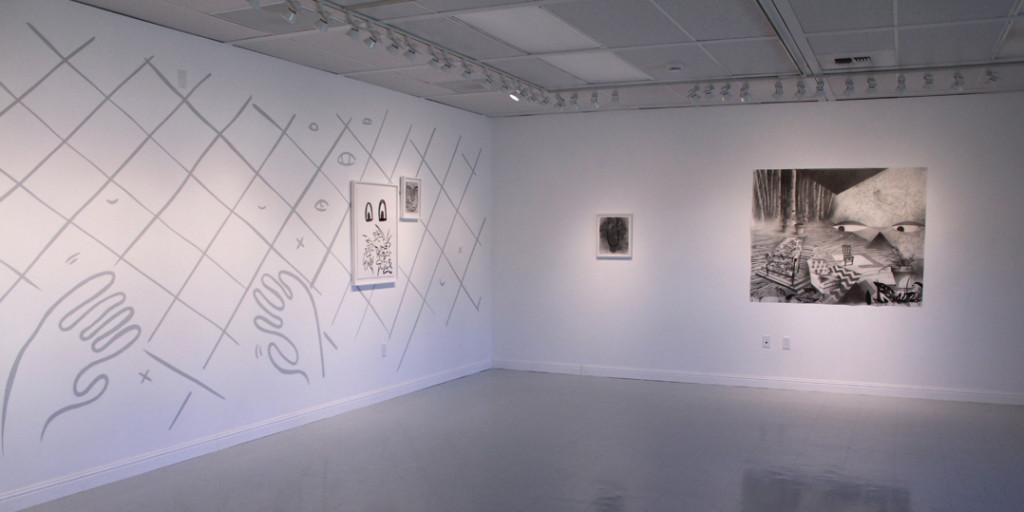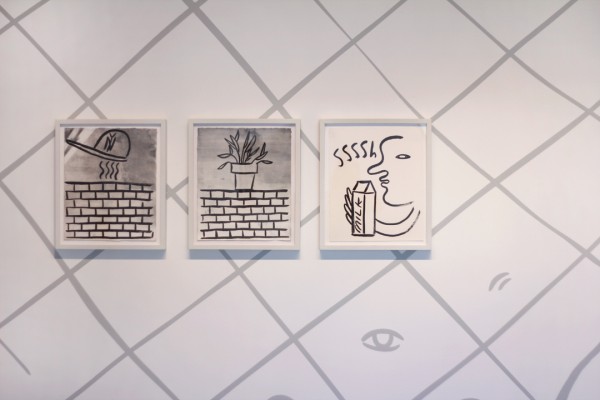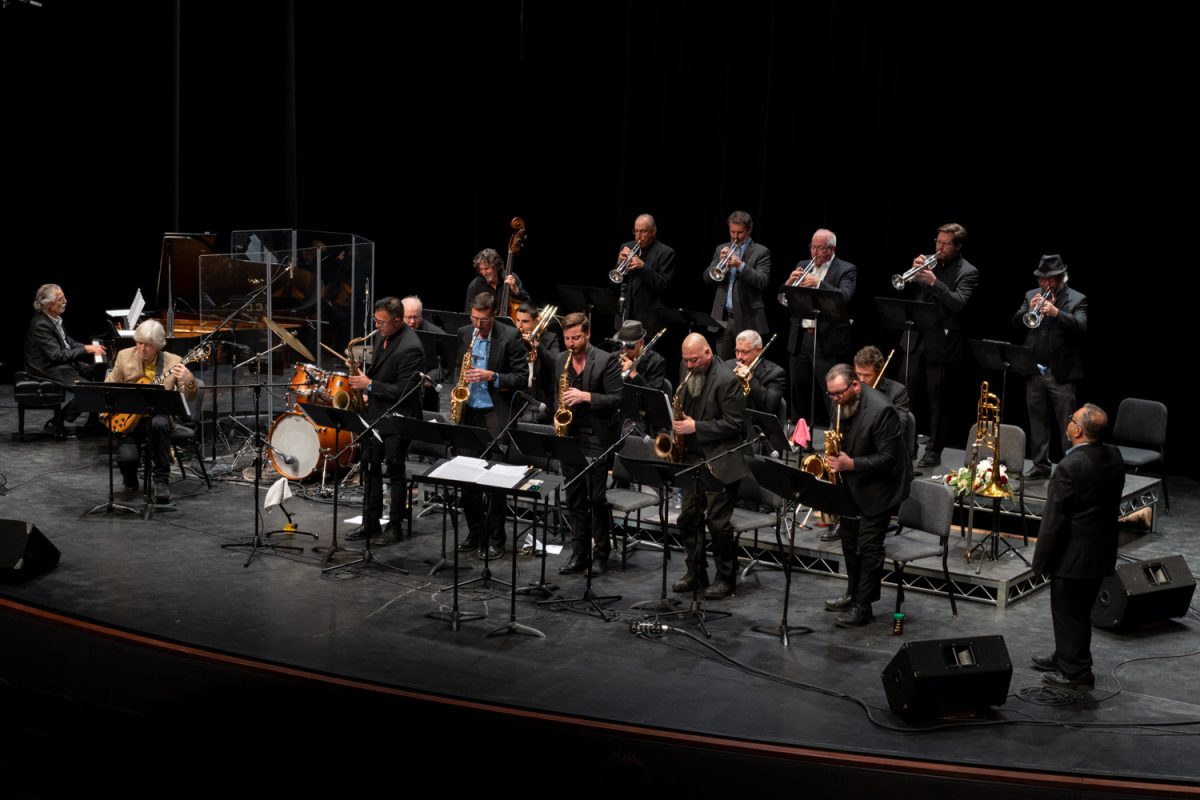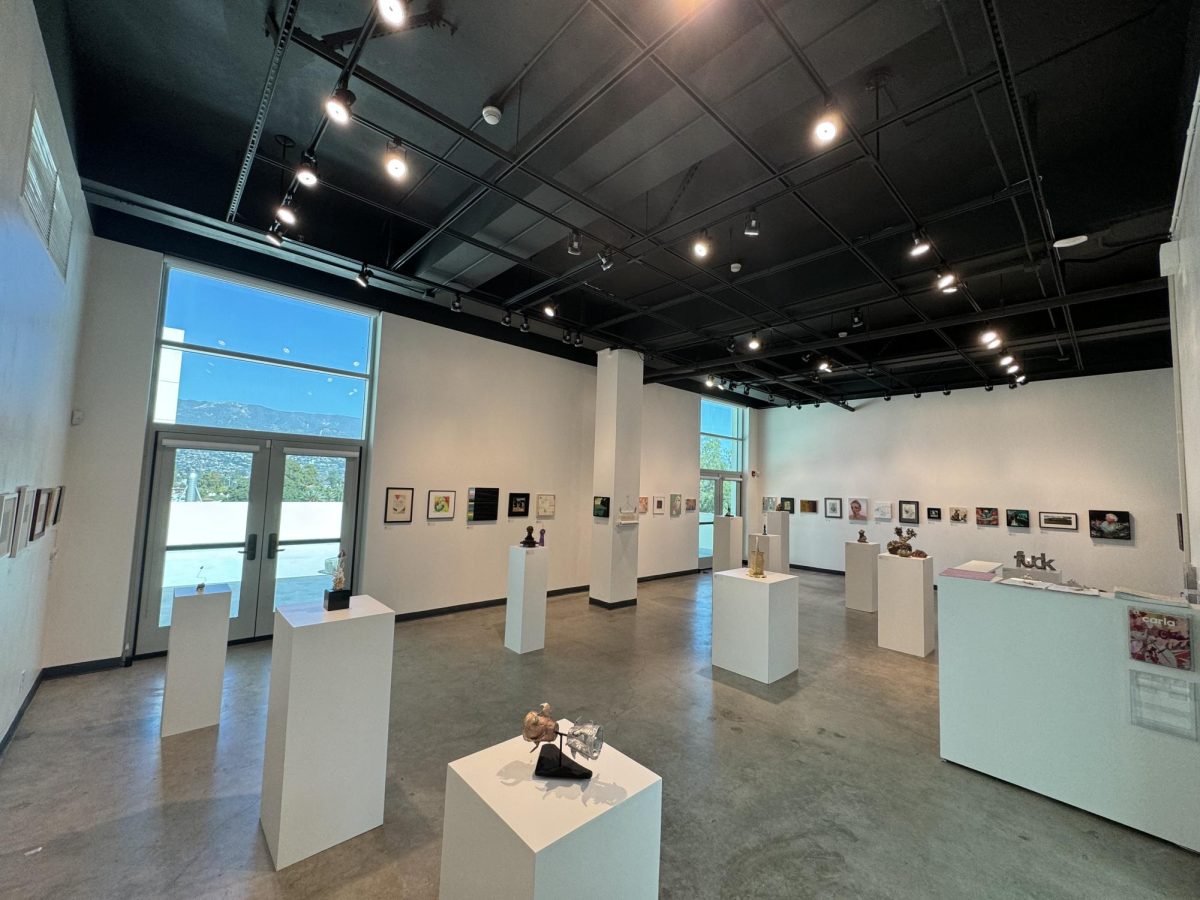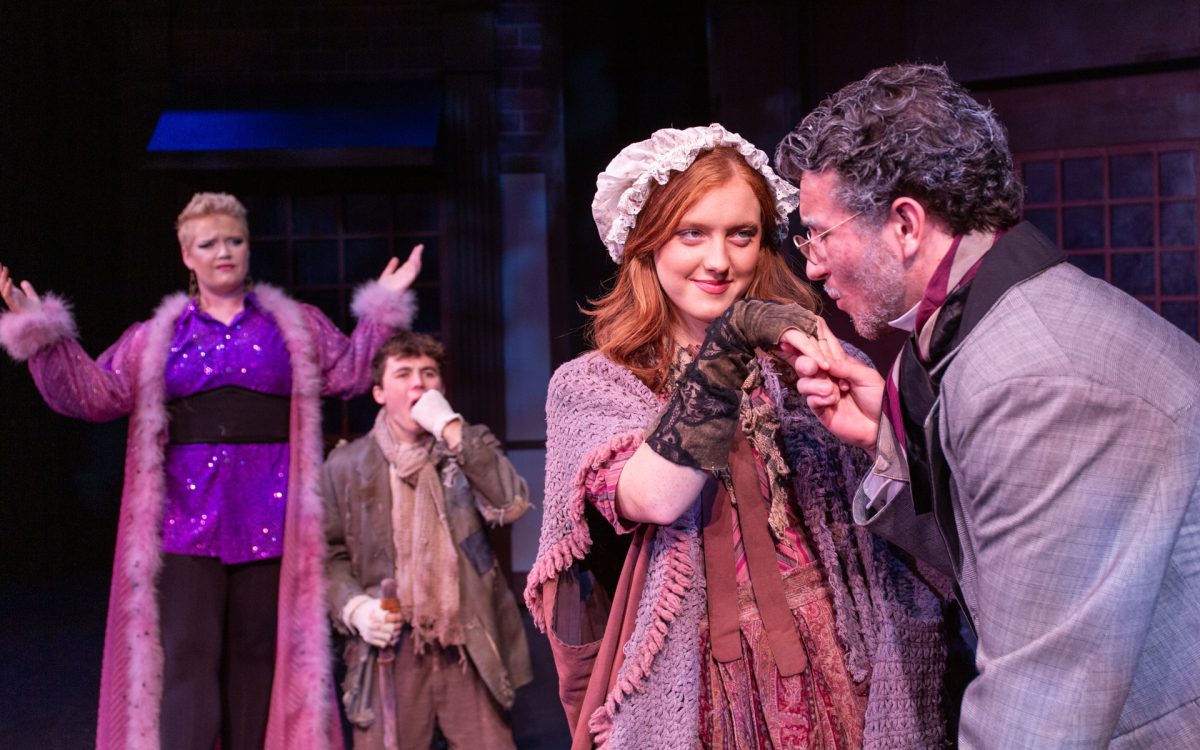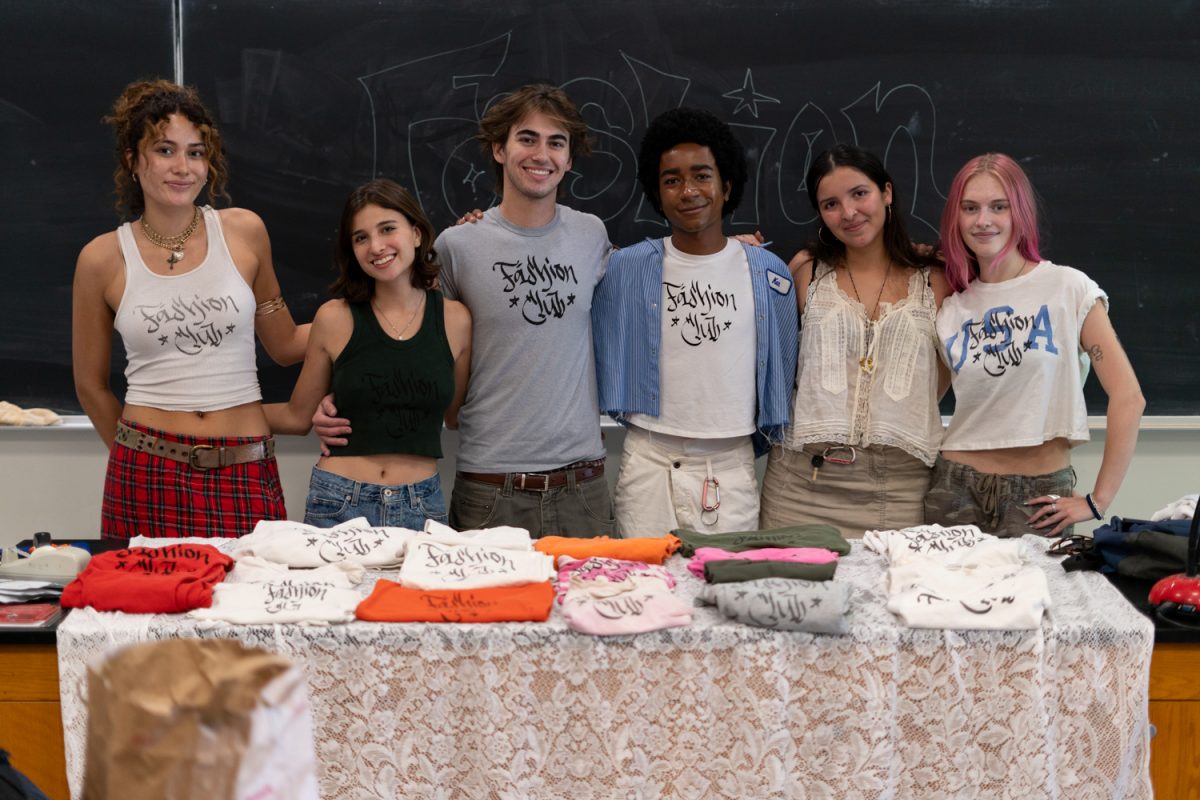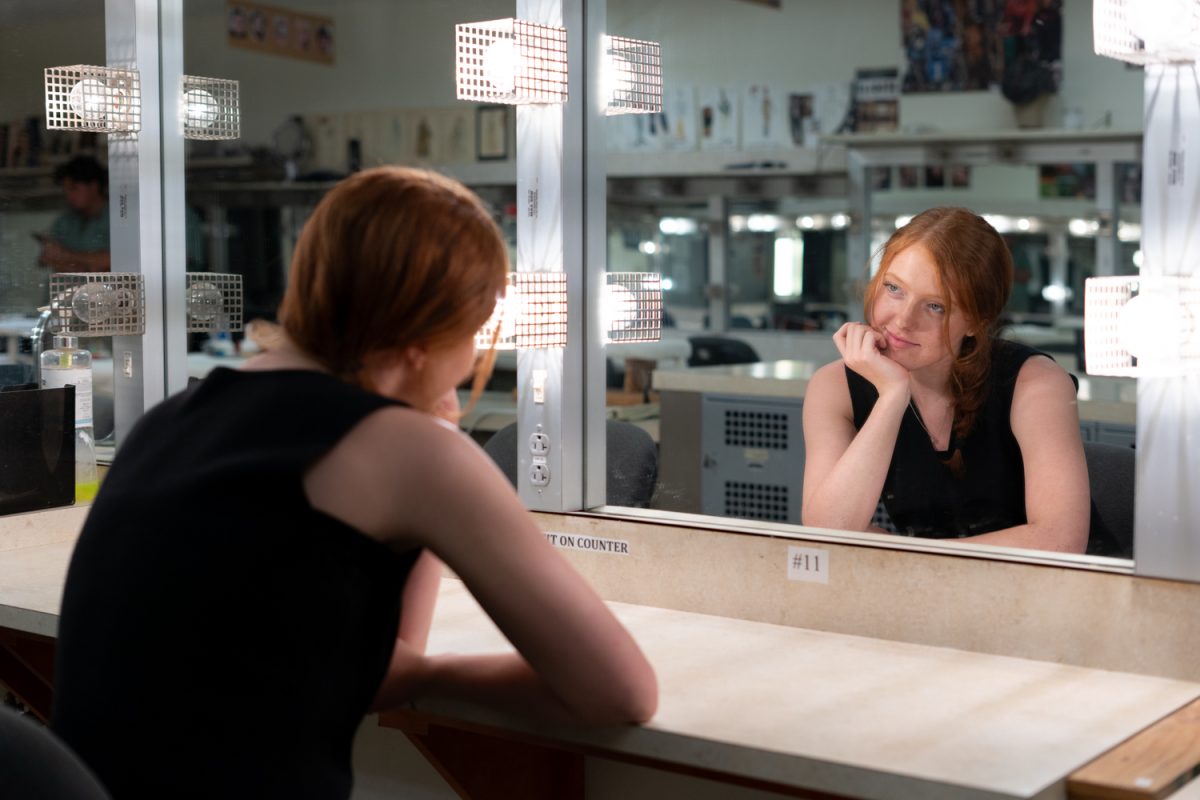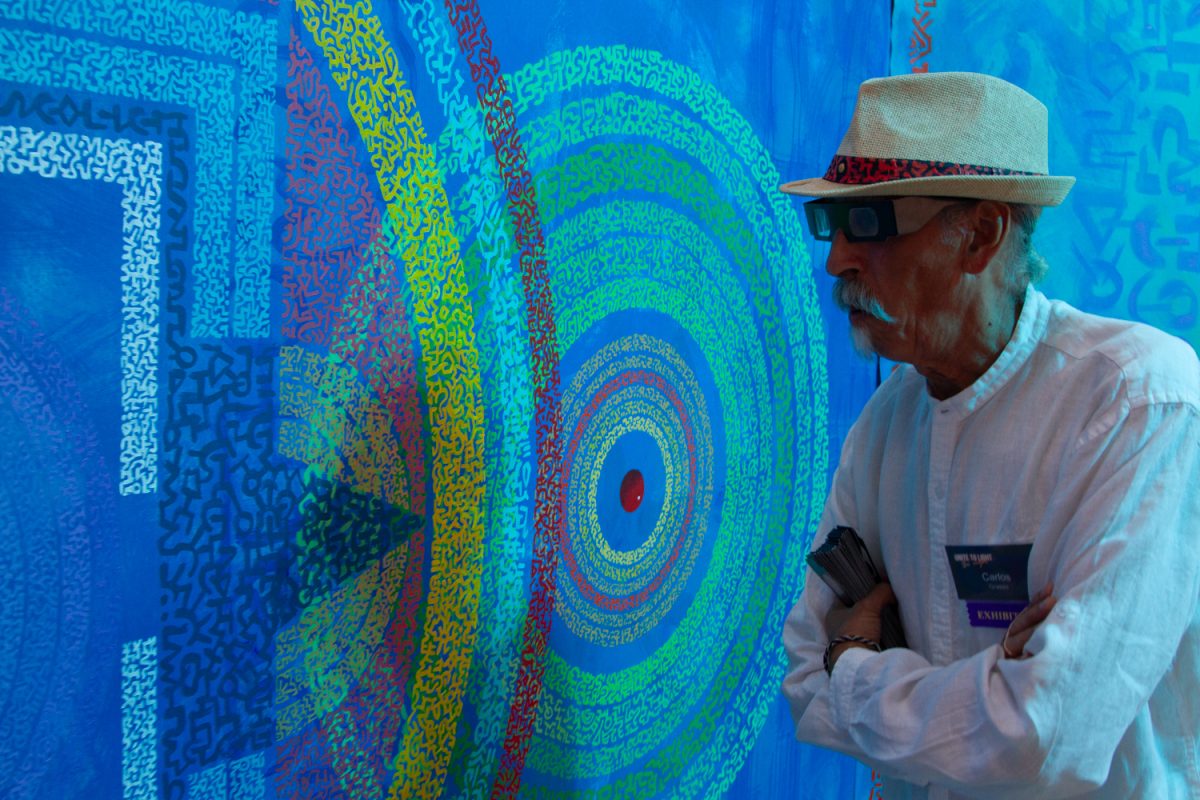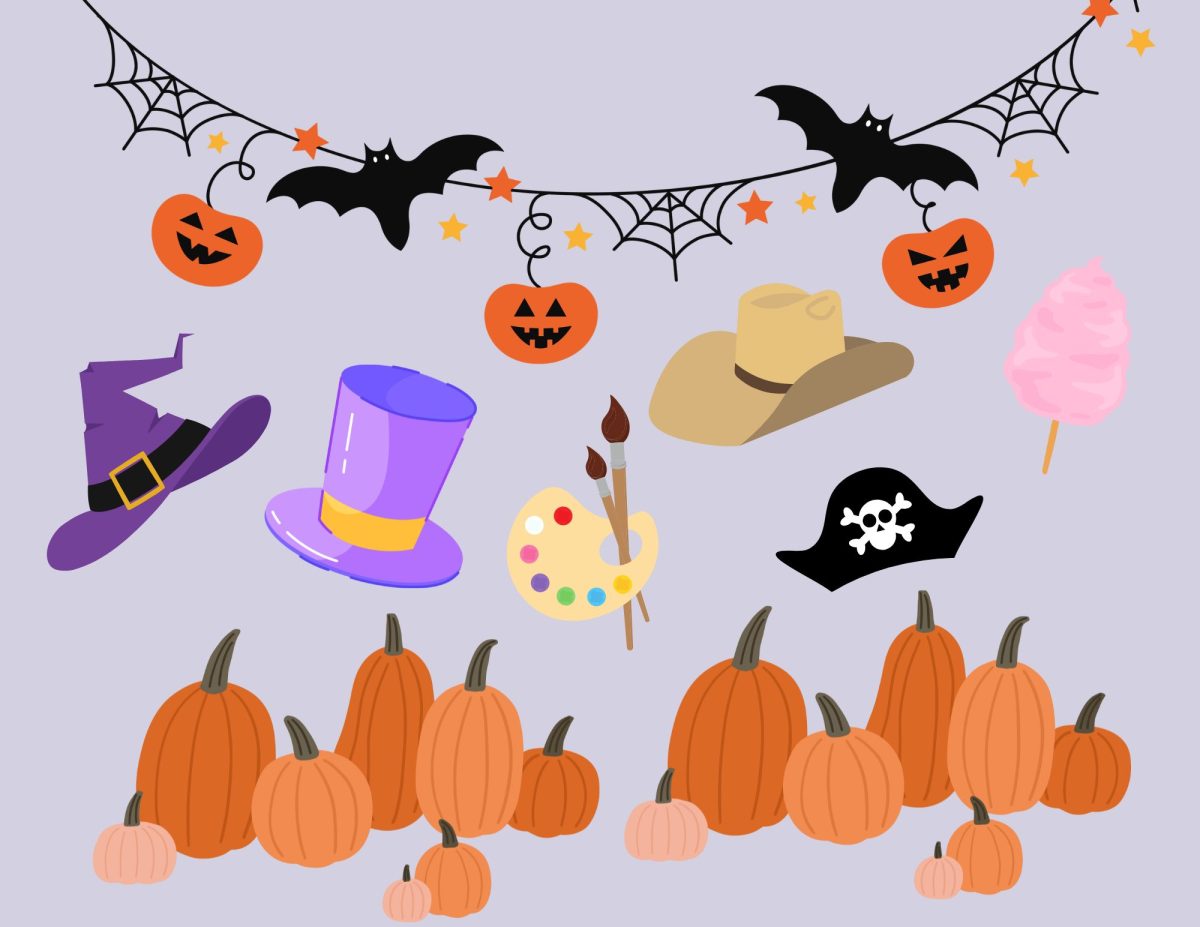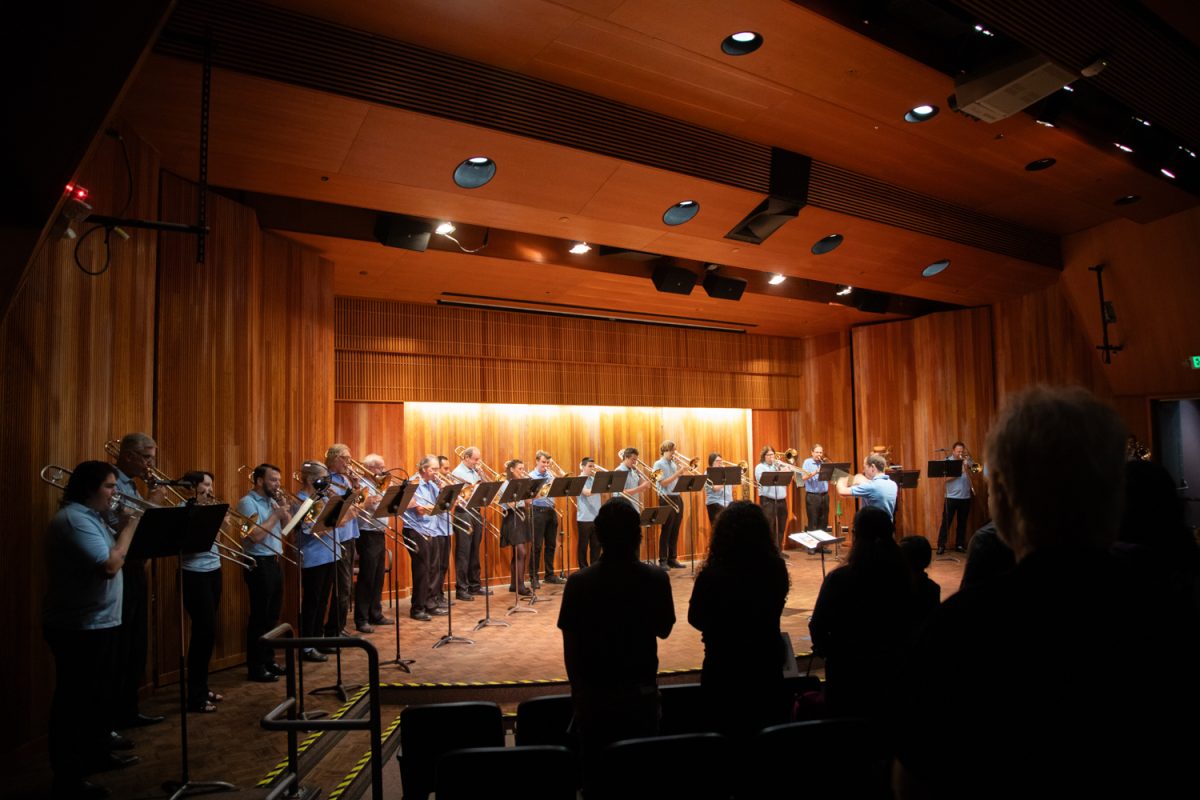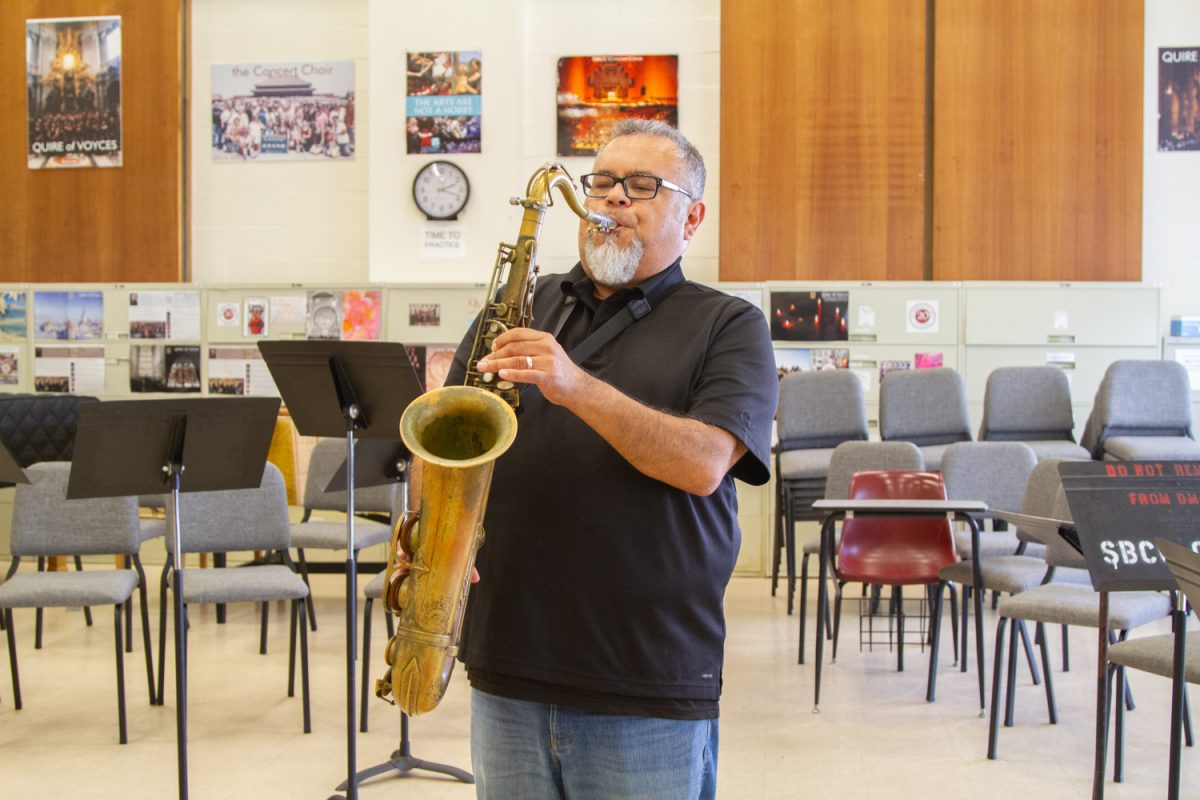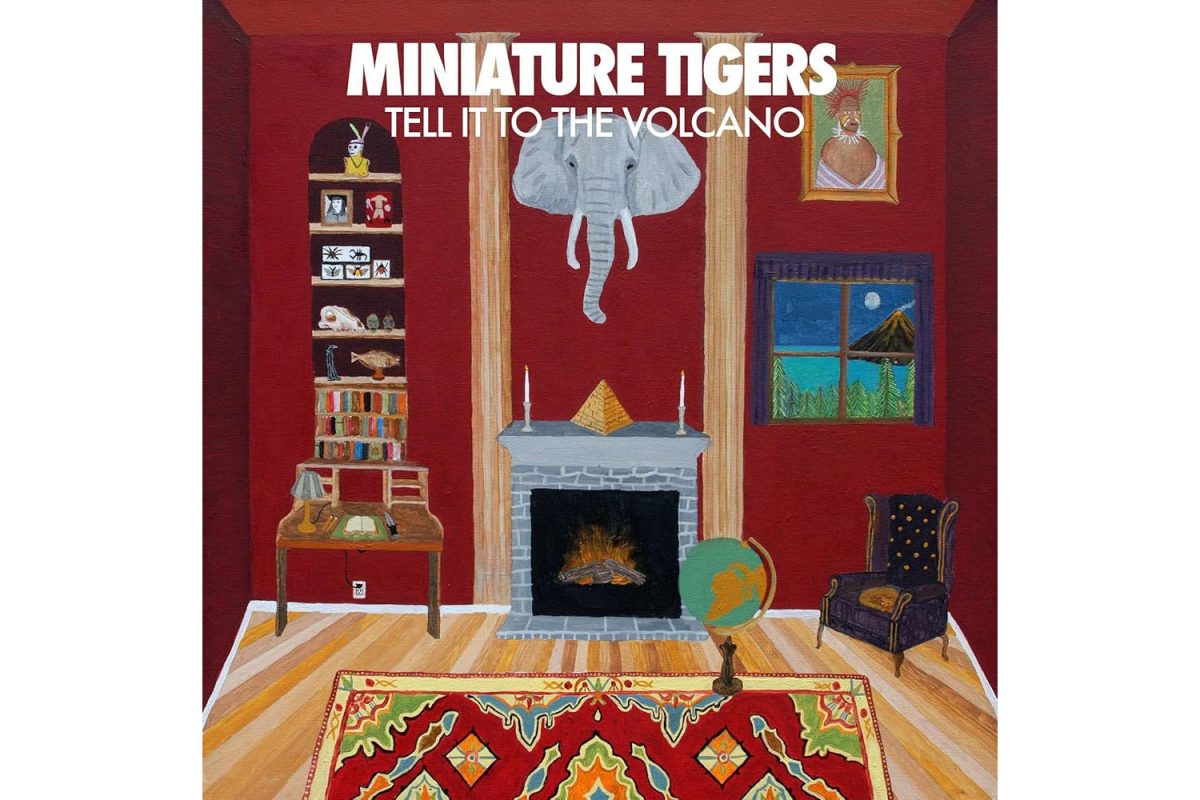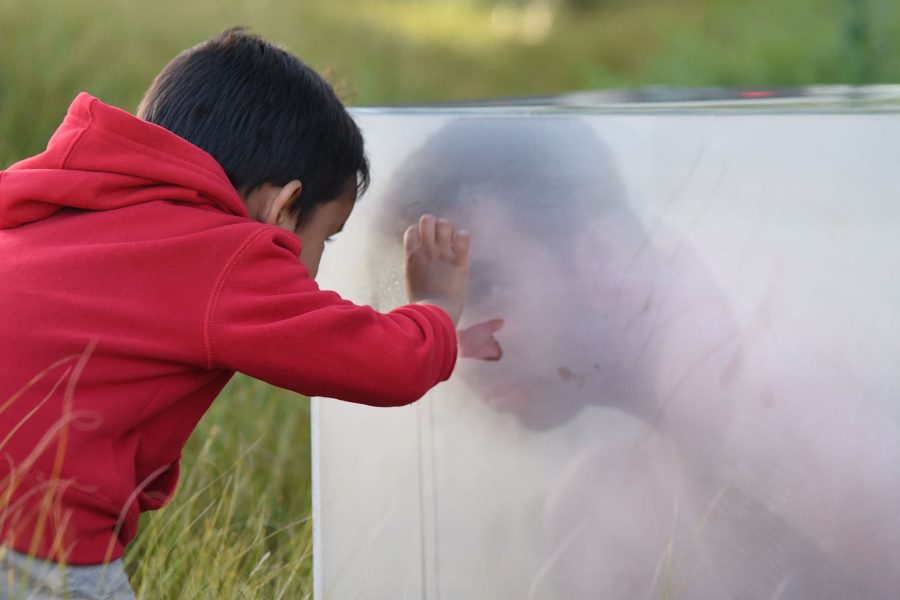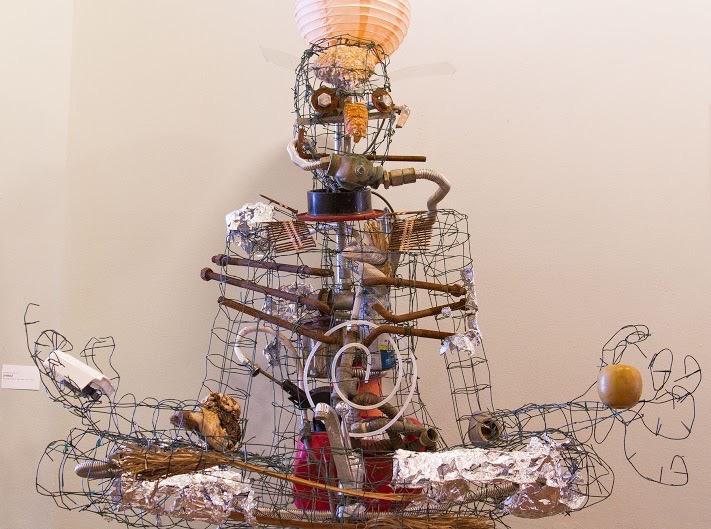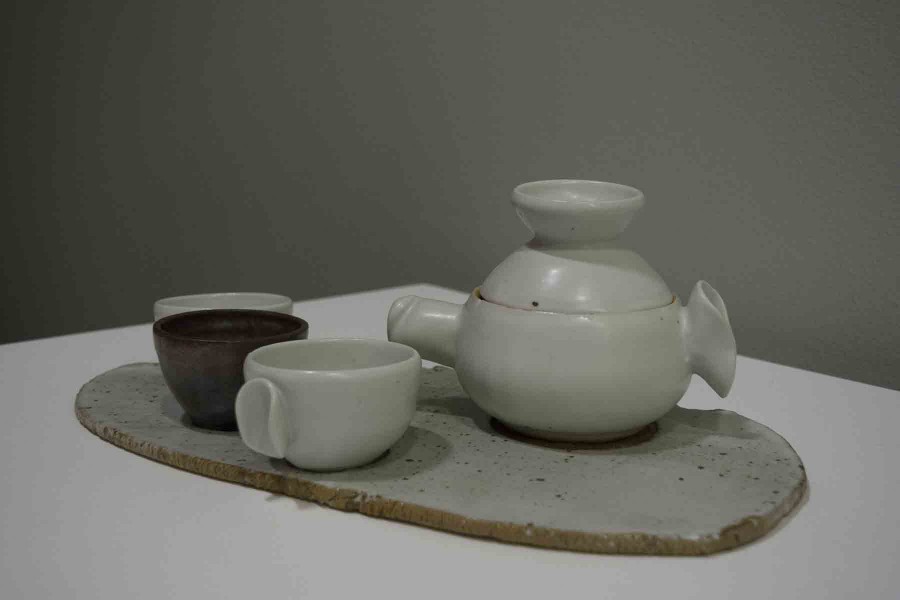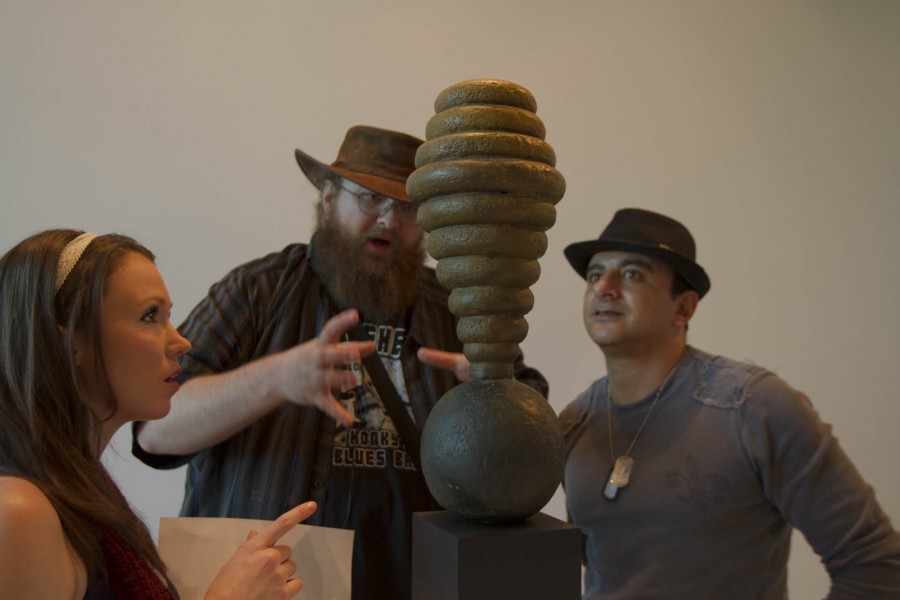The Atkinson Gallery is white, small, and box shaped, having been moved from the now-destroyed Humanities building to a portable on West Campus. It is silent. Stepping into the middle of the room is dangerous because that’s where paintings zero-in on the viewer, biting on all sides with peripheral-like flashes of objects familiar, though lost to memory.
Cool gray rectangles have been spread out across three-and-a-half walls and appear as nothing more than hazy monochromatic blurs. Then, one moves closer and common items begin to lift from the paintings; a floral chair, digital clock, coffee cup, cowboy hat, all appearing disconnected and disorienting, like coming into a dream.
Brian Scott Campbell’s “I’ve Got Levitation” installation opened Nov. 9 in the Atkinson Gallery and will remain open until Dec. 7. Campbell began teaching drawing at City College this semester.
His art’s intentions are illusive, hiding behind juxtaposing patterns and textures which inundate empty sets. For example, in “Wild Times,” the deserted table and chairs, which could have come from any 70s interior design catalogue, are immersed amongst a patterned floor, tiger fur rug and mountain backdrop. Layered on top of this are stripes crumpled like paper, and geometric patterns that add depth to the piece.
Together, these elements feel like a cacophony of visual stimulation. To make things even more interesting, Campbell plays with meshing interior and exterior space seamlessly, and because of the disorderly nature of his more complex paintings, the scenes presented may at first imitate impossible spaces.
Misplaced eyes are a reoccurring theme that alters the otherwise somber and empty tones of Campbell’s artwork.
He works mainly in graphite pencil and charcoal, exploiting them to create dimension and reinforce the contrast between washed out textures and objects he wants front and center.
Every once in a while the viewer experiences a jolt from the dark, disorienting atmosphere and finds a humorous image. This past year, Campbell composed a few pieces that harness a lighter feel, like “Drink Up II,” which features a simple single-stroke cartoonish profile holding a milk carton.
Over all, however, his paintings appear to be deserted utopias, trampled out and left yearning for human interaction, like dreamscapes thought up but no longer in use.
From left: “Wall I,” “Wall II” and “Drink Up II.”


